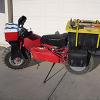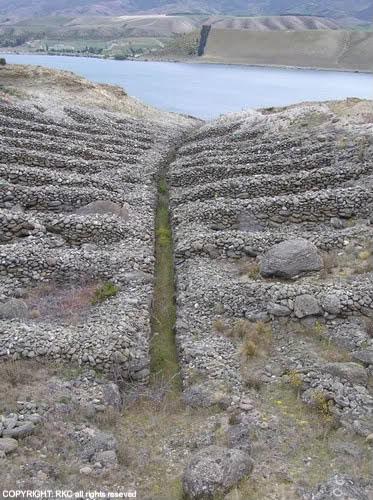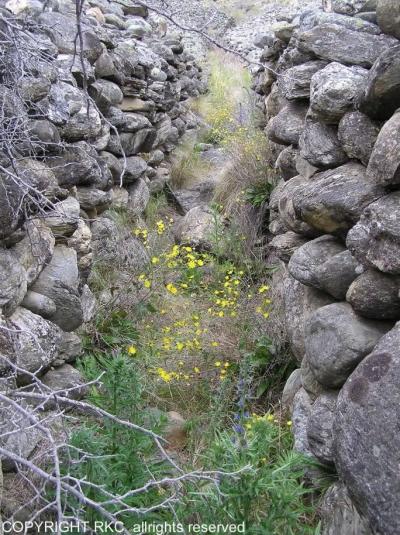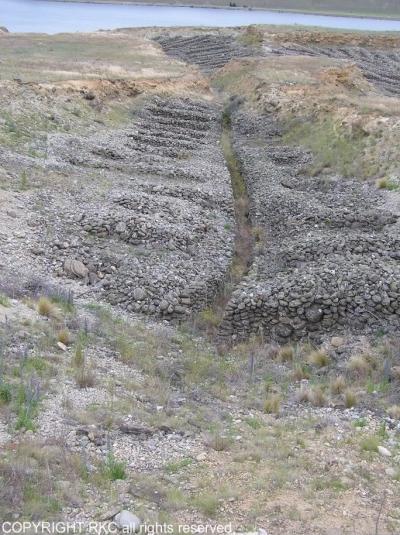Search the Community
Showing results for tags 'history'.
-
And this was 70 years ago.....
-
Steve, enjoyed your article about this dredge in the October issue of the IMCJ Prospecting and Mining Journal. I hope to get to the Chicken area someday. When I was a young boy in the late 1940's I had the opportunity to see a similar dredge operating in Prickly Pear creek south of Helena, Mt near Clancy. The dredged area is now pretty much covered by I-15 and the dredge is gone after sitting by the highway for many years. The picture is from a website showing a number of historical pictures from the area south of Helena. http://www.helenahistory.org/south_of_helena.htm Also, at this site just past the dredge image is a newspaper article about the dredge.
-
G'day, Here in New Zealand over the last 20 years archaeologists have extensively studied tailing piles while recording historic gold mining sites. And in the province of Otago in the South Island, there were over 500 mining sites, with tailing's, recorded in the upper reaches of a single river (Clutha river). In one report archaeologists stated that "... neatly stacked tailing's are commonly assumed to be the work of Chinese miners. This is an unreasonable assumption; many mining sites which have been worked only by European miners are equally tidy. Conversely, the tailing's in some sites known to have been worked by Chinese miners are not neatly stacked". My take on the issue referred to in the above statement by archaeologists is that both European and Chinese miners hand stacked rocks ... which they had to do out of necessity! But, there was often some difference, and more often than not the Chinese miners stacked the rocks much more neatly and precisely than the European miners. One reason for this was the fact that the Chinese tended to work cooperatively in large groups and would always work systematical. Also, the Chinese were more likely to be reworking previously worked ground than to be working virgin ground. The European miners were usually the first on the scene of a new gold discovery and in their rush to get the very best of the gold, they only did what work they had to do to get the best and would soon move on to the next rush. The Chinese would often come onto a goldfield a little while after the first rush had concluded, and after most of the Europeans had moved on to the next rush. Then, because the excitement of the initial rush had faded, they could work in a less hectic atmosphere. Chinese miners were thorougher by nature, and also ‘had’ to be thorougher to get whatever gold the European miners missed. And in a less hectic post-rush atmosphere, the Chinese had the time and inclination to precisely hand stack rocks in walls. Although it can never be ruled out that there may be some unworked highly auriferous virgin ground under tailing's, its highly unlikely ... especially where the Chinese had worked. Any gold found these days under tailing's is likely to be gold missed by the earlier miners who might have mistakenly thrown a nugget or two aside, such as when forking in a tail-race. Here in New Zealand there are an impressive number of old sluicing mines with stacked stones, that remain intact. Nevertheless, there have been many destroyed by gravel removal, land development, dam construction, modern mining, and in recent years by the bulldozing flat of tailing's to plant vines for wine. What has saved most of the remaining mine sites is their remoteness, and those that remain are mostly in an excellent state of preservation. New Zealand archaeologists have classified tailing's into the following categories, parallel tailing's, curved tailing's, box tailing's, fan tailing's, blow down tailing's, amorphous tailing's, pot-hole tailing's and herringbone tailing's. Herringbone tailing's are the most interesting and are characterised by a herringbone pattern with the stones stacked in parallel lines at angles to a central tail-race with the working face encroaching from the lower end of the claim. These tailing's are easily the most visually interesting of all tailing styles because of their symmetry. And the best example of herringbone tailing's in New Zealand, and most likely anywhere in the world, can be found at Quartz Reef Point in Central Otago. These tailing's have survived untouched and in a pristine condition since the very last miner abandoned the diggings. And the survival of these particular tailing's, even though they are within fives minutes walk of a main road, has been because they were on privately owned farmland where the landowner had always strictly restricted access. Until recently the only people the landowner would allow to visit the tailing's were organised groups, such as the local historical society, who would be allowed in about once a year while under supervision. Some years ago the landowner gifted the land to the Dept of Conservation (DoC) who now manage the ground encompassing the tailing's as one of New Zealand’s most important historic reserves. About four or five years ago there was a track constructed so visitors could easily walk in from a car park, and at the tailing's there is a viewing platform that overlooks the entire tailing's. They are now one of the premier tourist attractions of Central Otago with a great number of people visiting each day for what is a unique experience not to be found anywhere else. Herringbone tailing's Quartz Reef Point Tail race Herringbone tailing's Quartz Reef Point Regards, Rob (RKC)
-
G'day Steve, I could not locate the booklet about the finding of the Hand of Faith by Kevin Hillier. Anyway I think its now been reasonably established what detector model The Hand was found with. After thinking about it while looking for the booklet, I am fairly sure that at the time the Hand of Faith was found in 1980, the Groundhog was not yet being sold in Australia. In 1980 the Garrett Deepseeker must have been the most commonly used detector by the serious electronic prospectors in Victoria. It was certainly the most expensive detector and thus the top of the range ... like the latest Minelab PIs are today. It was however a detector I never managed to master as it was extremely noisy in Australian soil. I used mine in the Nth Queensland goldfields of Georgetown and Ebagoola where there was quite a few other electronic prospectors at the same time using this model of Garrett detector. A couple of the other prospectors tried to school me in getting the best out of it, but I could not persist long enough. I was too young and impatient in those days to learn how to pick the noise of a good target out from all the ground noise. I sold it to another prospector in Ebagoola who had more patience than me and who had successfully used one before. He told me it was by far the best detector available ... but I was just happy to get rid of the noisy beast of a machine, and he got a bargain. I got to thinking about Garrett detectors yesterday while looking for the booklet, and I was reminded about the famous story of how the Garrett Groundhog became popular on the Australian goldfields in the 1980s. There were a lot of guys detecting back then who had their wives with them in the bush, and many of the wives wanted a detector for themselves. Because the Deepseeker was so expensive, the husbands were reluctant to spend so much money on a detector that they thought would probably get little use. So a number bought their wives a Garret model which was the cheapest of the then Garrett range ... and that was the Groundhog. What they then found was that the wives were getting more gold than they were! Then the Deepseekers were put aside and the Groundhog became the detector of choice for a time. I was told at the time it was something to do with different frequencies of the two detectors, with the frequencies of the Groundhog better suited to the ground in Australia. But - maybe - it could have been because the Groundhog ran quieter. Then when Garrett started selling so many Groundhogs in Australia they rebadged the Groundhog and sold it as a detector specifically made for Australian conditions. I think it was called something like the A2B. I had even less success with the detector I had prior to the Deepseeker, which was my first ever detector. In the late 1970s there was a guy based in Newcastle who imported Compass detectors and he was all over the media promoting them as the detector driving the then gold rush. So, as I knew nothing about detectors, I believed the hype and bought a Compass detector from a mining supply shop in Sydney (where I was then living). But, rather than starting off cautiously in a new field of endeavour and trying detecting in a gold field close to home, I decided to go all in. I bought a Toyota Land Cruiser and headed to the Queensland goldfields with my brand new shiny Compass detector. I drove straight through for two days from Sydney to the Nth Queensland goldfield of Georgetown. And on getting to Georgetown I headed to the caravan park. Then, the very first person I spoke to when I got out of my Landcruiser said straight away ... "That detector is useless here!" And I soon found out he was right. I was the only one there with a Compass detector, which I was ridiculed for. Everyone else was using Garrett's and it was galling to see them leave the caravan park each morning and come back in the evening with smiles on their faces. It must have been a bit later when I bought the Deepseeker. And when I bought the Deepseeker I thought I could not go wrong this time as it was the top of the line detector that everyone else was using, and I must have made a good buy. Luckily I found that there were other means of gold getting to do in Nth Queensland other than using a detector. And a bit later I got into tin mining with a dredge, which I was successful at until the tin price crashed virtually overnight. Regards, Rob (RKC) . Detecting in Georgetown, North Queensland, in the mid 1980's. My Garrett Deepseeker MD in Nth Queensland ( I also had a much bigger coil!). My mining camp at Ebagoola goldfield. Another of my mining camps at Ebagoola. A woman friend detecting with a Garrett MD on the Georgetown goldfield in the mid 1980's. Abandoned miners hut, Ebagoola, North Queensland. https://imagizer.imageshack.us/v2/502x734q50/835/koe0.jpg Ebagoola, North Queensland https://imagizer.imageshack.us/v2/730x484q50/835/16q8r.jpg Georgetown goldfield.







